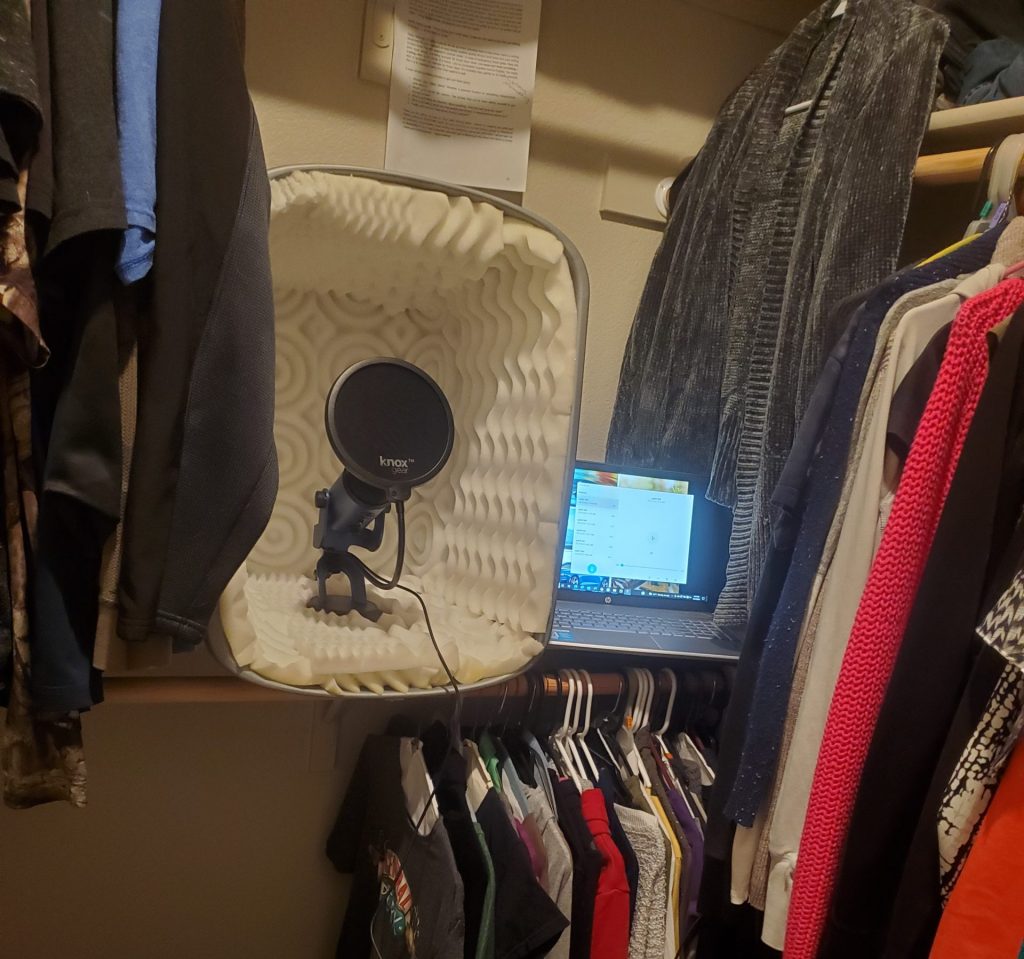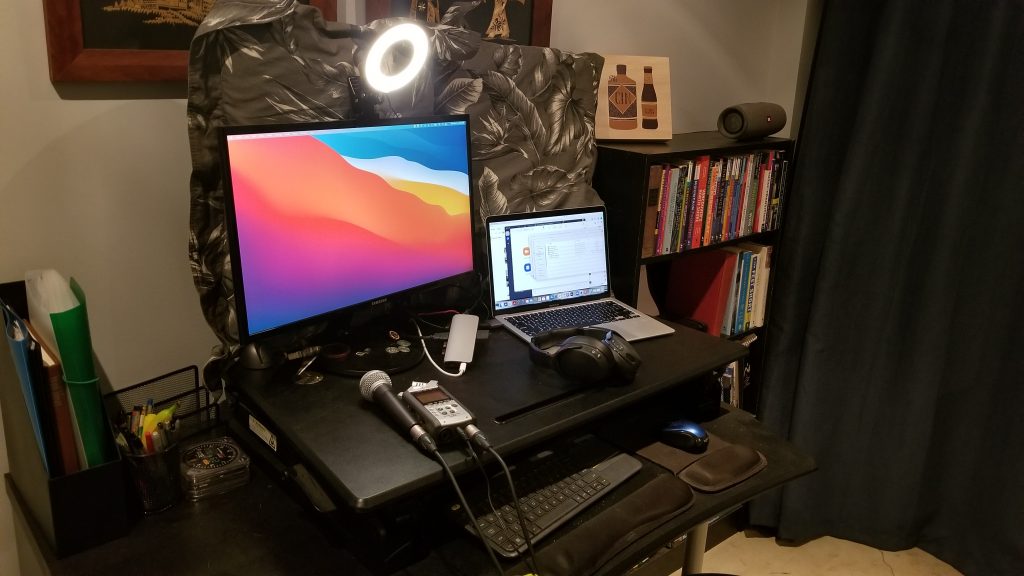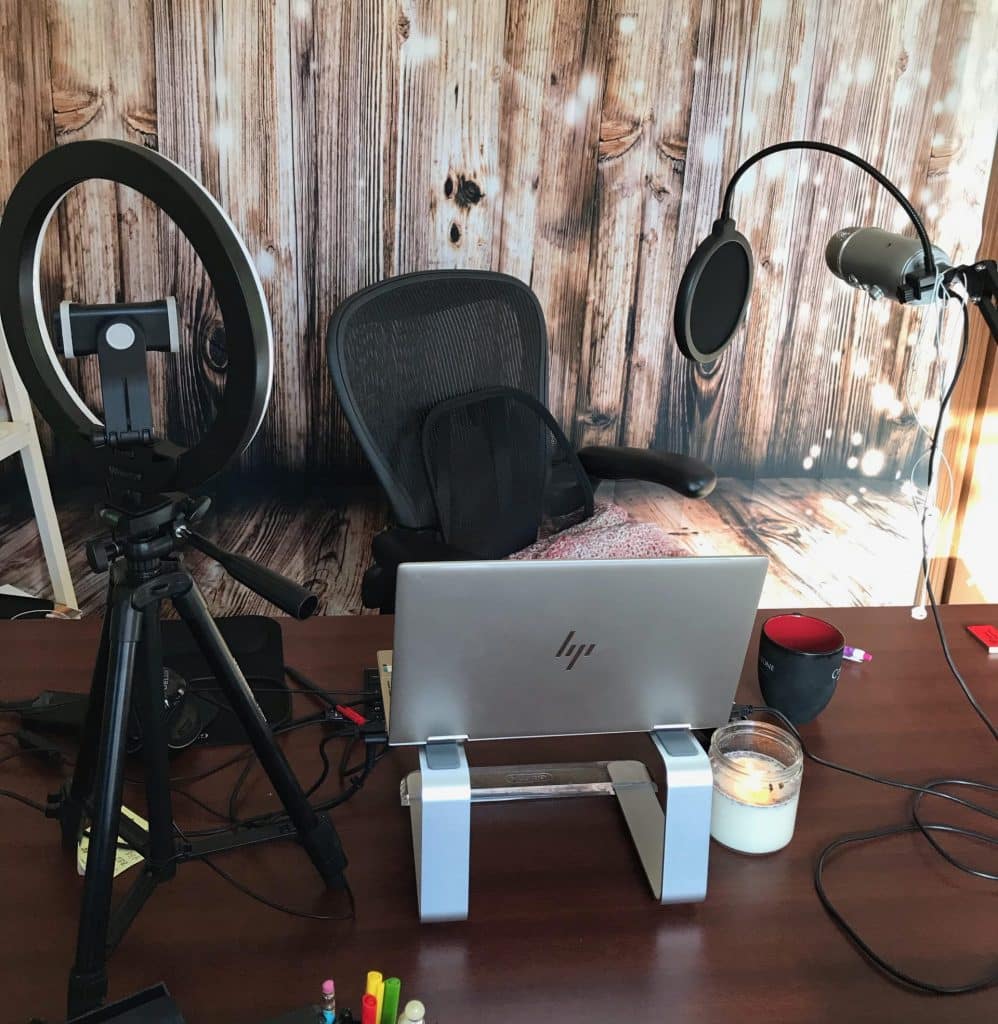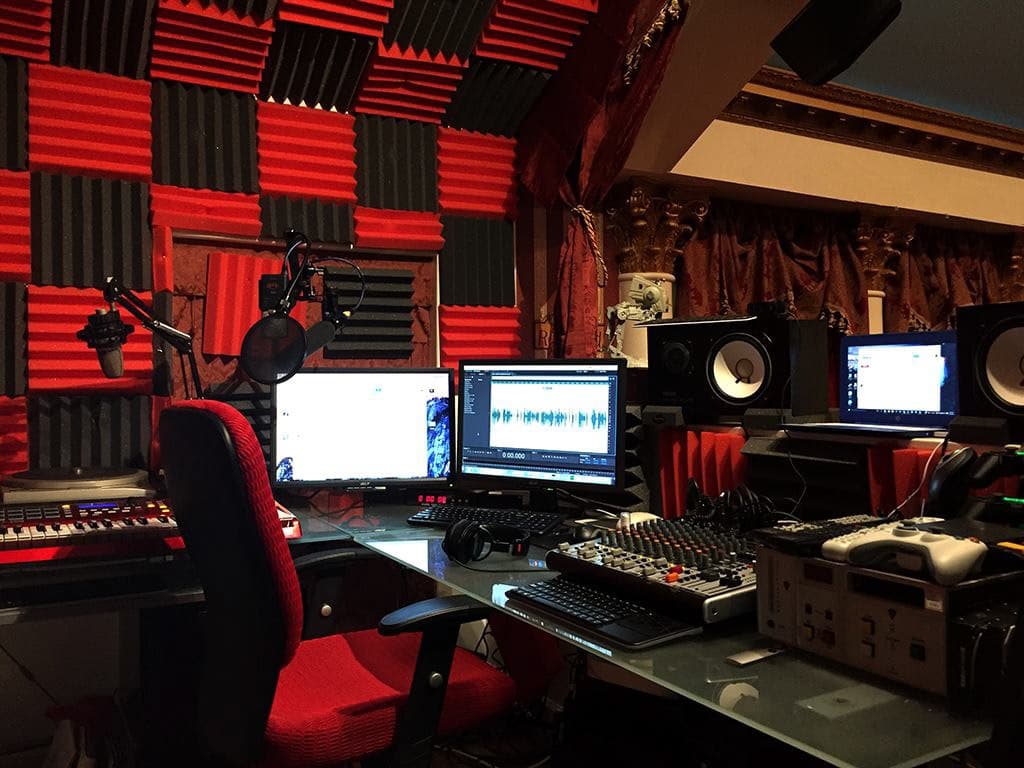[ad_1]
Are you looking for podcast studio setup ideas or for tips on how to upgrade your existing setup to sound more professional?
In this post, you’ll get both, plus see real examples of podcast home studios from established podcasters.
💡 Home Recording Studio Setup Tips
When you’re setting up your home recording studio, there are a few things to keep in mind:
- Use a quality microphone. Check out our post here for recommendations.
- When recording audio with multiple people, use a software program like Cleanfeed for a crisper sound recording.
- Record directly into editing software such as Audacity or Garageband for enhanced clarity.
- Turn off any exterior noises you can control such as your air conditioner and ice machine.
- Try to make sure you’re recording when neighbors won’t be mowing their lawn.
- Use noise cancelling equipment such as soundproofing. tiles/panels/boards, and microphone isolation shields.
- Don’t record next to glass such as mirrors or windows.
- Use a boom arm and a pop-filter for a higher-quality sound.
👋🏽 Related Reading: If you’re looking for more tips, check out our post on How to Record and Edit a Podcast.
1. Record in the Closet
Don’t have a spare bedroom for a podcast studio? Not to worry! Christine Whitmarsh who runs the podcast Your Daily Writing Habit said setting up your home recording studio in a closet is her number one tip for podcasters.
Here’s a picture of Christine’s setup:

As you can see from the picture above, Christine records her daily podcast in her walk-in closet.
Her set up includes an 18 gallon rubber bin lined with a foam mattress topper with a hole cut out in the bottom for her Blue Yeti mic. It’s a perfect booth within a booth!
2. Use Pillows and a Quiet Space
Jillian van der Geest of the Think Outside podcast says that pillows strategically placed in a quiet space work beautifully to muffle sound.
She also said that having a really good microphone is critical. She uses the SHURE SM58.
This is what her podcast space looks like:

Jillian said that her rule for recording guests remotely is to require they wear headphones to avoid external distractions, and to reduce the chance of weird echoes.
And for the best sound, Jillian says to ask your guests to use a quality microphone too!
3. Don’t Forget The Dog Collar! 🐶
JJ DiGeronimo who runs the Career Strategies for Women that Work Podcast said that one thing that can ruin your audio regardless of your home recording studio setup is all of the little noises you forget are happening in the background.
JJ recommends removing all the background noises that you possibly can … including your dog’s collar – that jingle can be quite distracting. If you have hardwood floors – even the pitter patter of your pets walking on the ground can be picked up by the mic.
Also, to avoid accidental “walk-ins” when you’re recording, tape a sign on your recording room door that let’s people know you’re recording.
Finally, add a note to your front door that says, “Please Do Not Ring the DoorBell” for all deliveries and unexpected guests.
Here’s what JJ’s at home recording studio looks like:

4. Upgrade As Soon As Possible
Cam Cornelius is a voice actor known as the Voice Over Dude and has a beautiful home recording studio.
His top tip for achieving the best possible sounds is to treat your studio with sound deadening material.
If you have the budget, upgrade your space with audio tiles as soon as you can. If audio tiles aren’t an option, at least fill your space with foam, blankets, or even clothes.
Anything that you can do to stop the echoes will help you achieve a crisper sound.
The more you treat your home recording studio design like a professional space, the more focused you will be on developing your podcast and achieving a better sound.
Here’s a peek at Cam’s recording studio:

It’s a Wrap
As you can see no two podcast home studios are the same and creative podcasters have learned to work within their budgets to achieve the best sound possible for their shows.
[ad_2]
Source link